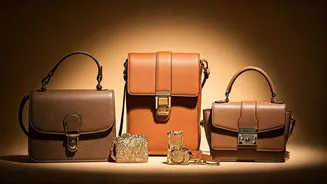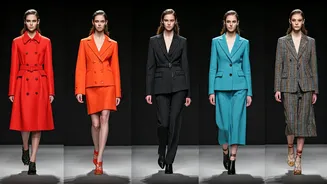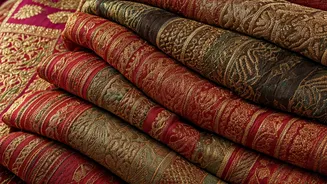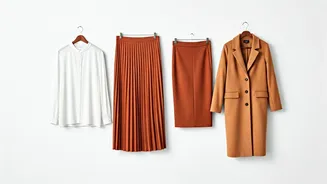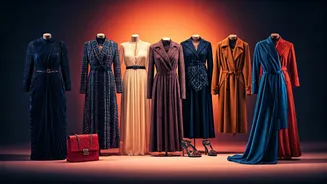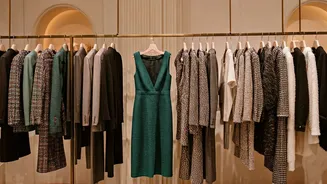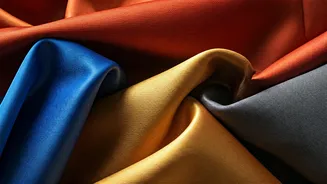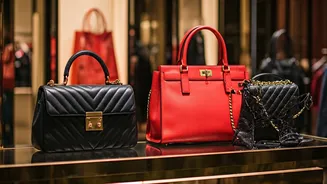Defining Personal Style
Establishing a personal style is akin to crafting a unique signature, a visual identity that mirrors your inner self. This journey begins with self-reflection.
Ask yourself, 'What makes me feel confident and comfortable?' Consider the activities you frequently engage in and the environments you find yourself in most often. Do you gravitate toward classic silhouettes, bohemian flow, or perhaps a more edgy, streetwear aesthetic? Start by analyzing the clothes you already adore. What common threads link these favorites? Is it a particular color palette, fabric, or design detail? Building a mood board with images of outfits, colors, and textures that resonate with you can further refine this understanding. Experimentation is key; don't be afraid to try different styles, and embrace the evolution of your taste. A personalized style is not about following trends blindly but rather curating a collection of pieces that reflect your authentic self, expressing who you truly are without uttering a word.
Decoding Current Trends
Keeping abreast of current fashion trends can feel overwhelming, but a strategic approach can simplify the process. Begin by identifying credible sources of information, such as fashion publications, influential blogs, and established fashion houses. Understand that trends often cycle, with elements from the past resurfacing in new interpretations. This awareness allows you to make informed decisions about which trends align with your personal style and preferences. Pay attention to runway shows, street style blogs, and social media platforms to gain a sense of the prevailing aesthetics. Evaluate trends critically; not every trend is suitable for every individual. Consider factors such as your body type, lifestyle, and existing wardrobe. Instead of adopting trends wholesale, selectively integrate elements that complement your established style, creating a personalized and contemporary look. The aim is to express your individuality, not to become a clone. This way, your outfits will always look and feel authentic, resonating with a confident statement.
Building a Wardrobe
Constructing a versatile wardrobe is like building a strong foundation for your fashion journey. It starts with essential pieces, items that form the core of your wardrobe and work across numerous outfits. These staples typically include well-fitting basics like a white shirt, a little black dress, tailored trousers, a quality denim jacket, and a neutral-colored coat. Invest in pieces that are well-made, fit you impeccably, and complement your lifestyle. When shopping for these key pieces, prioritize quality and timeless design over fleeting trends. Once the essentials are in place, incorporate statement pieces that express your individual style. These could be bold prints, vibrant colors, unique accessories, or items that reflect your personal interests. Build a collection that offers a balance between versatility and personality, allowing you to create diverse looks. As your style evolves, update your wardrobe gradually, replacing worn-out items and adding new pieces that reflect your current preferences. Building an effective wardrobe is a continuous process of curation and refinement, always mindful of your own style.
Accessories and Finishing
Accessories are the finishing touches, transforming an outfit from simple to striking. They add personality and flair to your ensembles. Start with a foundation of essential accessories like a versatile handbag, a classic belt, and a selection of jewelry that complements your taste. Explore options such as statement necklaces, delicate bracelets, or bold earrings, depending on your preferences and the overall style you want to achieve. Experiment with scarves, hats, and other accessories to add layers and dimension to your looks. Choosing the right accessories involves considering the silhouette of your outfit, the colors involved, and the event or occasion. For example, a minimalist outfit can be transformed with a bright scarf, while a formal ensemble benefits from elegant jewelry. Don't underestimate the power of footwear. Shoes can complete an outfit, providing style and practicality. Whether it's chic heels, casual sneakers, or boots, choose footwear that matches the overall aesthetic of your clothes and provides the needed comfort. By carefully selecting your accessories, you have the ability to elevate your fashion statements to a new level.
Sustainable Fashion Practices
The fashion industry's environmental impact is increasingly recognized, making sustainable practices essential for conscientious consumers. Choose ethically produced garments made from sustainable materials such as organic cotton, recycled fabrics, or innovative textiles. Support brands that prioritize fair labor practices, minimizing their environmental footprint. Extend the lifespan of your clothes by investing in quality items that endure wear and tear. Adopt strategies to maintain and care for your garments, such as proper cleaning and storage. Embracing slow fashion principles also involves rejecting fast fashion and resisting impulse purchases. Instead, focus on building a more intentional wardrobe composed of well-made, versatile pieces. Consider secondhand shopping, thrifting, and clothes swapping, which extend the life cycle of garments while offering unique styles. Repurpose and upcycle clothing items to give them a new purpose. By making conscious choices, you can minimize your environmental impact and support a more responsible fashion ecosystem, encouraging a more environmentally conscious approach.
